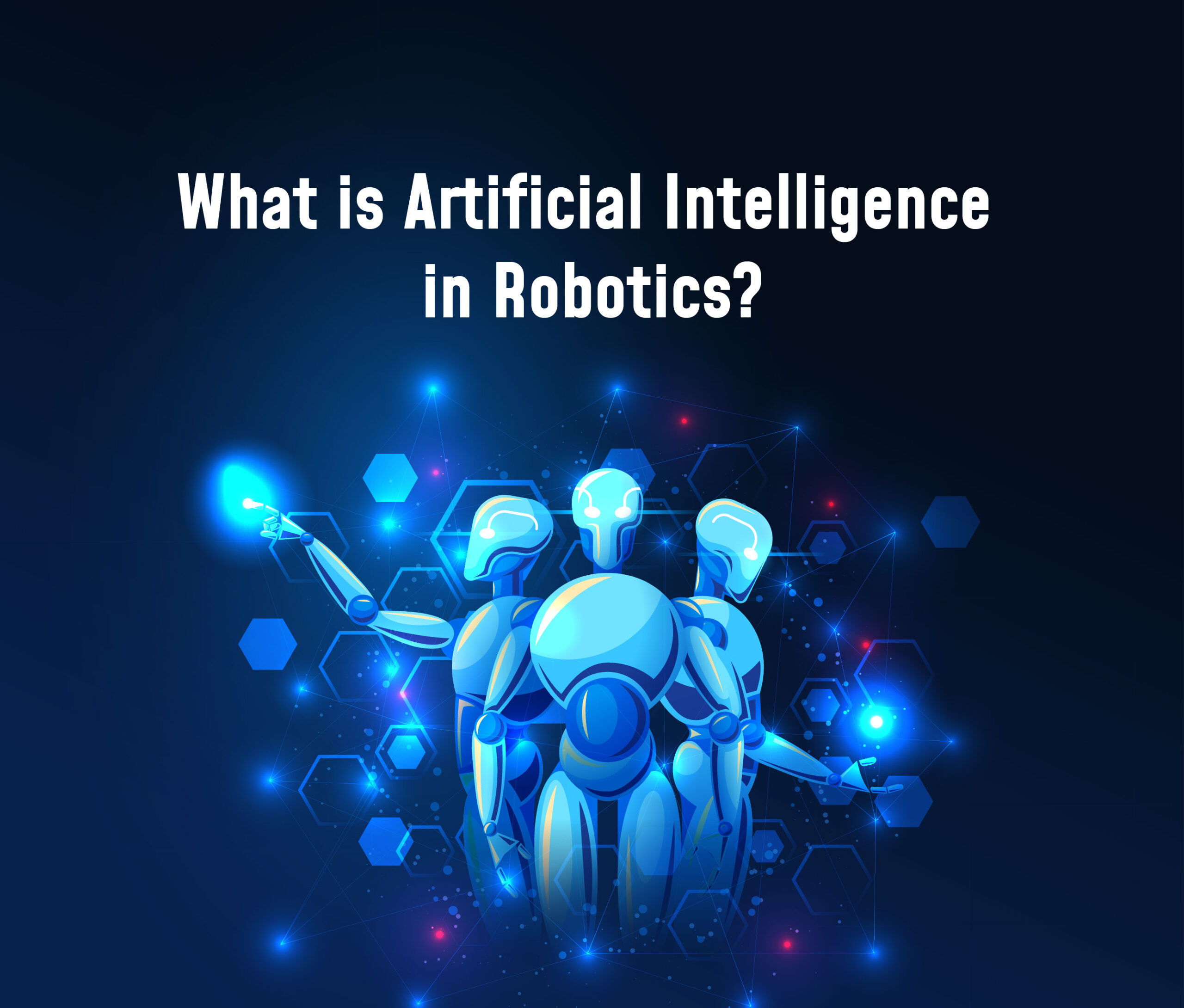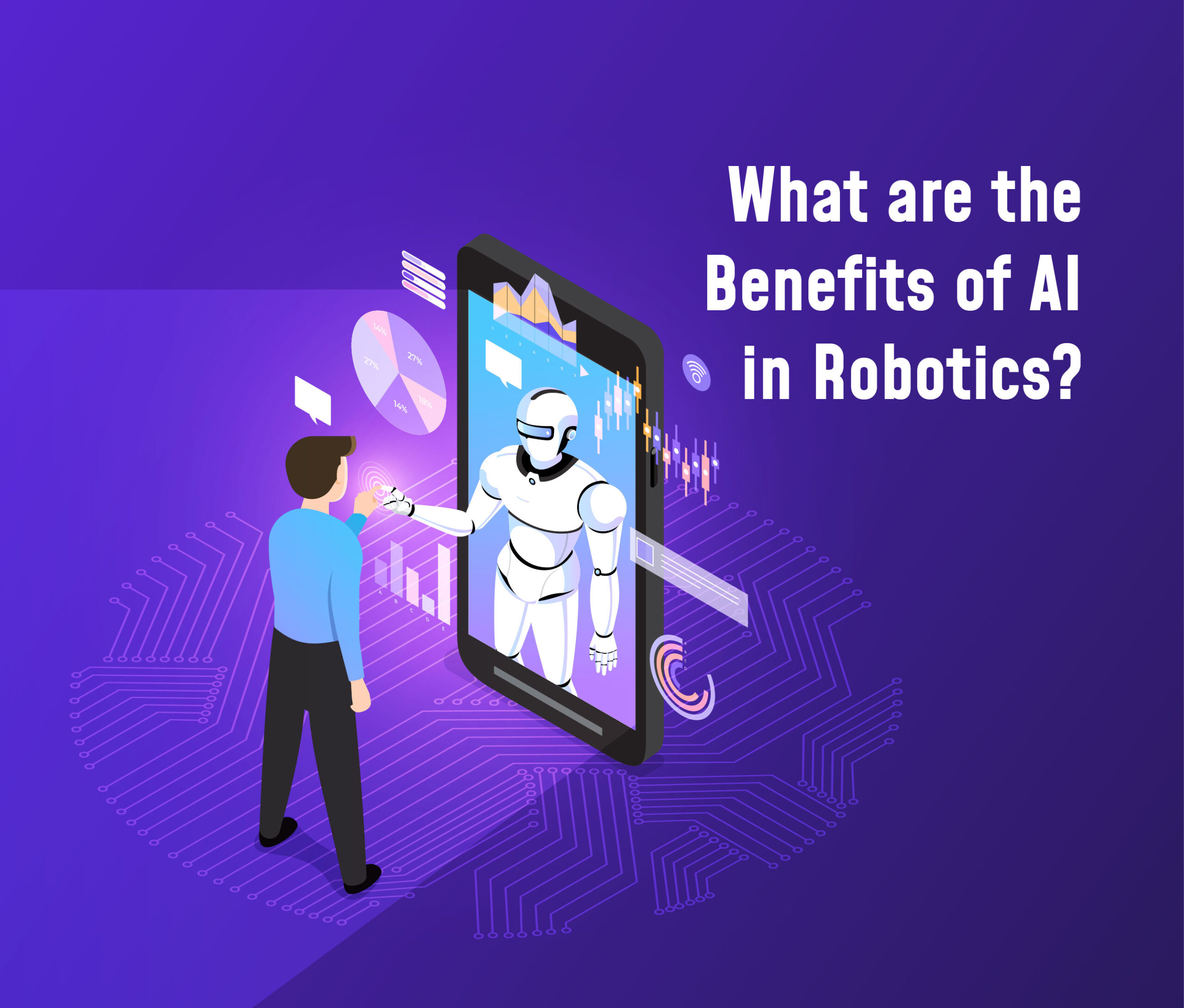It’s hard to miss the never-ending hype about Artificial Intelligence (AI). You’ve probably heard about it even if you’ve been living under a rock. The term “AI” has become ubiquitous in recent years.
Companies of all sizes are investing in AI, and some are even hiring AI experts with 7-digit salaries. From manufacturing to medicine, AI-powered robotics have transcended science fiction, ushering in a new era of possibilities.
In this blog, we’ll explore the remarkable synergy of AI and robotics, a fusion that’s revolutionizing industries and reshaping our world. Let’s understand how AI-driven robotics streamline processes, boost safety, and facilitate innovation, ultimately shaping a future where machine intelligence complements human ingenuity.
What is Artificial Intelligence in Robotics?

Simply put, AI in robotics is defined as the incorporation of AI techniques and concepts into robotic systems. Robot perception, learning, reasoning, and decision-making are enabled through the use of AI algorithms and methodologies, empowering robots to carry out tasks with more autonomy and adaptability.
Here are some key aspects of AI in robotics:
- Learning and Adaptation: Robots are habituated with the ability to learn from data and enhance their performance using AI. This allows them to acquire new skills, adjust their behavior, and learn new things due to machine learning techniques, including supervised learning, reinforcement learning, and deep learning.
- Planning and Decision-Making: Using AI algorithms, robots can devise the best pathways or trajectories to complete jobs optimally. They may evaluate data, consider limitations, and make decisions following predetermined goals or trained models.
- Control and Execution: AI helps to control and carry out robot movements. Robots can move precisely and interact with their surroundings successfully because of techniques like motion planning, motion control, and motor coordination.
- Human-Robot Interaction: Another goal of AI in robotics is to enhance human-robot communication. Robots can comprehend and react to human commands or cues via natural language processing, gesture recognition, and social intelligence algorithms, which improves their usefulness and collaboration with people.
- Automation Work Process: Robots that use AI can operate autonomously, carrying out tasks without continual human supervision. This includes making decisions and adjusting behavior in response to changing situations autonomously.
- Adaptability: Roboticists and engineers aim to create adaptable, intelligent machines that can carry out challenging jobs, adjust to changing environments, and communicate with people in a way that feels natural. This advancing field has definite future prospects in numerous sectors and areas.
Also Read: Vention Becomes Universal Robots Certified Solution Partner
What are the Benefits of AI in Robotics?

Now that we have a fair idea about AI-powered robots, let’s uncover the numerous advantages they offer.
Given below are the top benefits of AI in robotics.
- Improved Productivity and Efficiency: AI enables robots to carry out jobs quickly, accurately, and consistently, resulting in greater productivity and efficiency. AI-enabled autonomous robots can perform labor-intensive, repetitive jobs, freeing up human resources for more difficult and innovative work.
- Greater Accuracy and Precision: AI algorithms improve robots’ perception and sensing abilities, enabling them to interpret data from multiple sensors and take precise actions. As a result, tasks like object detection, manipulation, and navigation become more precise.
- Learning Curve: AI gives robots the ability to learn from their experiences and adapt to new circumstances. Through machine learning techniques, robots may learn new abilities, improve their behavior, work in a variety of situations, manage dynamic duties, and adapt to shifting situations.
- Enhanced Safety: By empowering robotic systems to recognize and react to possible dangers, AI can increase the safety of those systems. Robots with AI algorithms installed can assess sensor data in real-time, spot risks, and take the necessary precautions to avert or reduce such risks.
- Complex Decision-Making: Using data analysis, patterns, and predetermined goals, AI systems allow robots to make complex judgments. They may evaluate numerous variables, take limitations into account, and produce plans or activities that are optimum. This is especially helpful in situations when quick decision-making is essential.
- Cost savings: AI in robotics can result in cost reductions in several different ways. Organizations can cut labor, production, and maintenance costs by automating operations, minimizing errors, and increasing efficiency. AI can also provide predictive maintenance, reducing downtime and improving resource efficiency.
- Exploration of Hazardous Environments: AI-powered robots can be used in dangerous locations where human presence is problematic or impractical, such as deep-sea exploration, nuclear plants, or disaster zones. Robotics and AI integration allows these robots to work autonomously, gathering information, conducting inspections, and completing jobs in hazardous environments.
- Increased Consistency and Quality: AI algorithms can provide reliable, high-quality output in manufacturing operations. Robots with AI capabilities can carry out repeatable, precise tasks that minimize errors and variability in product quality.
How Are Google’s AI-Powered Robots Going to Change the World?
In July 2023, Google announced the release of a new artificial intelligence (AI) model that can help robots learn to throw out trash. The Robotics Transformer 2 (RT-2) model is trained using data and images from the internet that can be converted into robot actions.
It has been demonstrated that the RT-2 paradigm works well in teaching robots to dispose of rubbish in different situations. The model, for instance, can instruct robots to recognize various waste materials, including paper, plastic, and food scraps. These robots can learn how to open and seal trash cans as well as how to avoid obstacles.
Google believes that the RT-2 model, which is still in development, has the potential to provide robots with a greater ability to carry out jobs that are currently performed by people.
Wrapping Up
The advantages of AI in robotics are extensive, ranging from enhanced precision and adaptability to higher productivity and efficiency. AI promotes seamless human-robot collaboration, gives robots the ability to make complicated judgments, and increases their safety.
As AI develops, the potential for AI-powered robots grows, delivering even greater breakthroughs across a range of industries. The seamless integration of intelligent algorithms and mechanical prowess is revolutionizing how we work, learn, and interact with the world.
Robotics’ use of AI in the future has a lot of promise for innovation and change, making it a fascinating area with broad societal consequences. Even though the journey has just begun, it promises a future where innovation knows no bounds.





